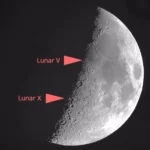Shuhei Yoshida, a prominent figure in the video game industry and the former head of PlayStation Studios, recently offered his perspective on two of the most debated topics currently shaping the future of interactive entertainment: the increasing cost of video games and the integration of artificial intelligence (AI) in game development.

Speaking in an interview with PlayStation Inside, Yoshida shared his insights based on decades of experience at the forefront of the industry.
Introducing Shuhei Yoshida
Shuhei Yoshida spent over 30 years at Sony Interactive Entertainment (SIE), playing a pivotal role in the development and strategy of the PlayStation brand, including overseeing the creation of first-party games. Known for his strong relationships with indie developers and his deep understanding of the game creation process, his views carry significant weight within the industry. He departed from Sony earlier this year but remains active, taking on advisory roles with various game publishers.
The Reality of Rising Game Prices
Yoshida acknowledged the ongoing trend of rising game prices. He noted that he had anticipated prices would eventually increase, but expressed surprise that Nintendo appeared to be the first platform holder to push towards an $80 price point with a new major release, Mario Kart World (likely referring to a future or rumored title, as recent major Nintendo releases have typically launched at $60-$70).
Following Nintendo’s lead, Microsoft reportedly also announced that some of their upcoming AAA games would carry an $80 price tag. This represents a notable jump from the $60-$70 price point that has been common for standard new releases in recent years, particularly on the latest generation of consoles.
Why AAA Development Costs Are Soaring
Yoshida explained the fundamental economic pressures driving these price increases. He described the current situation as an “impossible equation,” where significant real-world inflation coincides with player expectations for AAA games that are becoming ever more ambitious and, consequently, exponentially more expensive to develop.
According to Yoshida, “Everything” related to video game development today is “more advanced and more technologically demanding than ever before.” Creating high-fidelity graphics, expansive open worlds, complex systems, and rich content requires larger teams, longer development cycles, and greater investment in technology and tools. While each publisher ultimately sets the price for its games, Yoshida emphasized that the core driver behind these pricing decisions lies squarely in skyrocketing “production costs.”
Diversifying Revenue to Fund New Games
Given the immense budgets required to develop modern AAA games, which can easily run into the hundreds of millions of dollars, publishers are under increasing pressure to find ways to ensure profitability and fund their future projects. Yoshida highlighted that this is why industry actors are “so keen to diversify their revenues.”
This includes strategies beyond just the initial sale of the game, such as implementing microtransactions, battle passes, live service elements with recurring content, and exploring new distribution models like subscription services. These diversified revenue streams are crucial for generating the profits necessary to continue investing in the development of the ambitious AAA games that the public most eagerly anticipates and purchases.
Remasters, Remakes, and PC Ports: A Financial Strategy
In light of these rising costs and the need to diversify revenue, Yoshida commented on the “proliferation of remasters and remakes” seen in the industry. He believes this trend makes sense financially because these projects typically have relatively lower development costs compared to building entirely new AAA games.
By reusing existing assets, code bases, and core design elements, studios can develop remasters and remakes with smaller teams and shorter timelines, providing a more reliable return on investment. Yoshida suggested that companies aren’t undertaking these projects merely to give older games a “fresh coat of paint” or reach a new audience, although those are benefits.
Instead, he views remakes and remasters as “a kind of ‘easy’ solution to bring in profits” that can then be reinvested to help fund the development of new, original titles. He noted that the same financial thinking applies to the increasing number of PC ports for games previously exclusive to consoles.
The Debate Around GTA 6 and the $100 Price Point
The speculation about the potential price of Grand Theft Auto 6 has been a hot topic among gamers and industry observers. Yoshida addressed this, stating he wasn’t sure if Rockstar Games would ultimately price GTA 6 at $100, as some anticipate. Such a price point would indeed represent a significant jump in the standard price for a new AAA game.
For context, Yoshida mentioned that Grand Theft Auto 5 was released in 2013 with a price tag of $60, which, when adjusted for inflation, would be approximately $80 today. The immense scale, unparalleled anticipation, and near-guaranteed massive sales success of the Grand Theft Auto franchise make it one of the few properties where a $100 price is even being seriously discussed as a possibility within the market.
Seeking Balance: Alternative Game Development Models
Acknowledging the economic pressures driving prices and development scales, Yoshida also discussed the importance of finding a “balance” between production costs and the final price of a game. He cited Expedition 33, an upcoming game from developer Scavengers Studio, as a potential “way forward” for the video game industry.
Expedition 33 is being developed by a relatively small team and is planned to sell for $50 and also launch into Xbox Game Pass. Yoshida views this as an example of how a studio “can make excellent games with tighter teams and budgets without compromising quality,” demonstrating that compelling and high-quality experiences don’t always require the gargantuan budgets and teams of traditional AAA games. He suggested such alternative development and distribution models (like subscription services) offer different pathways for studios to succeed.
AI as a Tool for Game Development
Shifting to the subject of artificial intelligence, Yoshida expressed his views on the increasing use of AI in game development. He anticipates that generative AI technologies will become a “very important tool” in the future, primarily being “used creatively to improve games.” However, he cautioned that the industry is still in the early stages of fully understanding how to best utilize this technology effectively. Yoshida views the possibilities offered by AI as fundamentally “tools, not ends in themselves.”
He suggested that the integration of generative AI should be seen as a “simple continuation of what has always been done in video games,” pointing out that forms of AI have been used in games (e.g., for enemy behavior, pathfinding) since their inception.
AI’s Role in Workflow Efficiency
Yoshida elaborated on how AI is expected to assist developers. While some concerns exist about potential job losses, he emphasized that human developers must remain “at the heart of the project.” He believes AI systems and technologies should be deployed to “speed up processes and tedious tasks that don’t impact on the artistic aspect of games.”
This includes areas like automating the generation of certain assets (textures, environmental details), assisting with animation, speeding up testing procedures, or aiding in content localization. By taking on these more repetitive or time-consuming tasks, AI can potentially free up human developers to focus on more creative, artistic, and high-level design challenges.
Concerns About AI and Imitation
While generally positive about AI as a tool, Yoshida did express specific concerns regarding its capabilities, particularly around “imitation.” He stated he was “actually more worried about the imitation aspect of AI, because beyond plagiarism, AI can now imitate a work at a lower cost.” He distinguished this from outright plagiarism, which involves copying specific copyrighted material.
Imitation, in this context, refers to AI’s ability to generate new content that closely mimics the distinct style or aesthetic of existing works (like the “Studio Ghibli-style” AI trend he praised as “very well done” and funny). Yoshida’s concern is that the ease and low cost of generating such imitations, even if they don’t reach the depth or quality level of the original creative works, could still present issues for original artists and intellectual property holders.
Shuhei Yoshida’s New Chapter
Earlier this year, Shuhei Yoshida left Sony after a distinguished 30-year career that significantly shaped the PlayStation brand. He has since embarked on a new chapter, taking on advisory roles with various game publishers. This includes working with Bokeh Game Studios, the developer of Slitterhead, and advising publishers like Annapurna Interactive and Kepler Interactive, the publisher of Expedition 33.
This new role allows him to continue contributing his vast experience and unique perspective to the video game industry from a different vantage point, supporting diverse development studios and projects.
Navigating the Future of Gaming
Shuhei Yoshida’s insights provide valuable perspective on the complex challenges and opportunities facing the video game industry. He views the rising cost of AAA games as an unavoidable consequence of increasing development ambitions and inflation, necessitating strategies like diversifying revenue and utilizing remasters/remakes to fund future projects.
While the potential GTA 6 price point highlights the peak of this trend, he also points to alternative models like Expedition 33 as viable pathways for creating quality games. On the technological front, Yoshida sees AI as a powerful tool with the potential to enhance creativity and efficiency in game development, urging developers to learn its effective use while remaining mindful of concerns, particularly regarding the implications of AI’s ability to imitate existing artistic styles.
His continued presence in an advisory role ensures his experienced voice remains part of the ongoing conversation about navigating the future of gaming.







